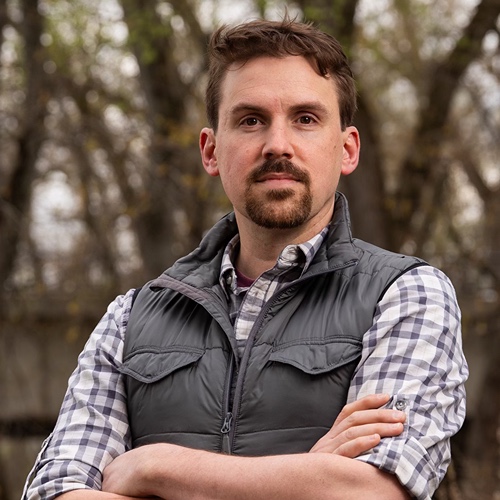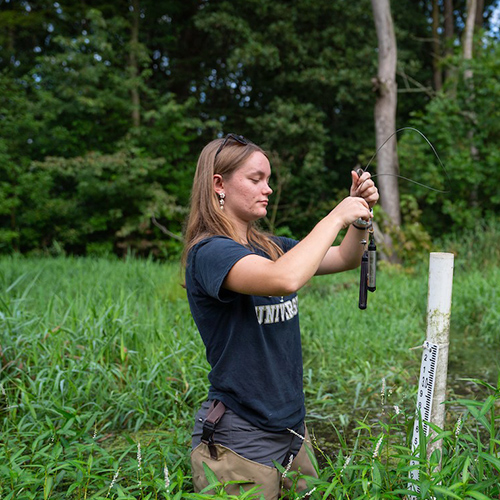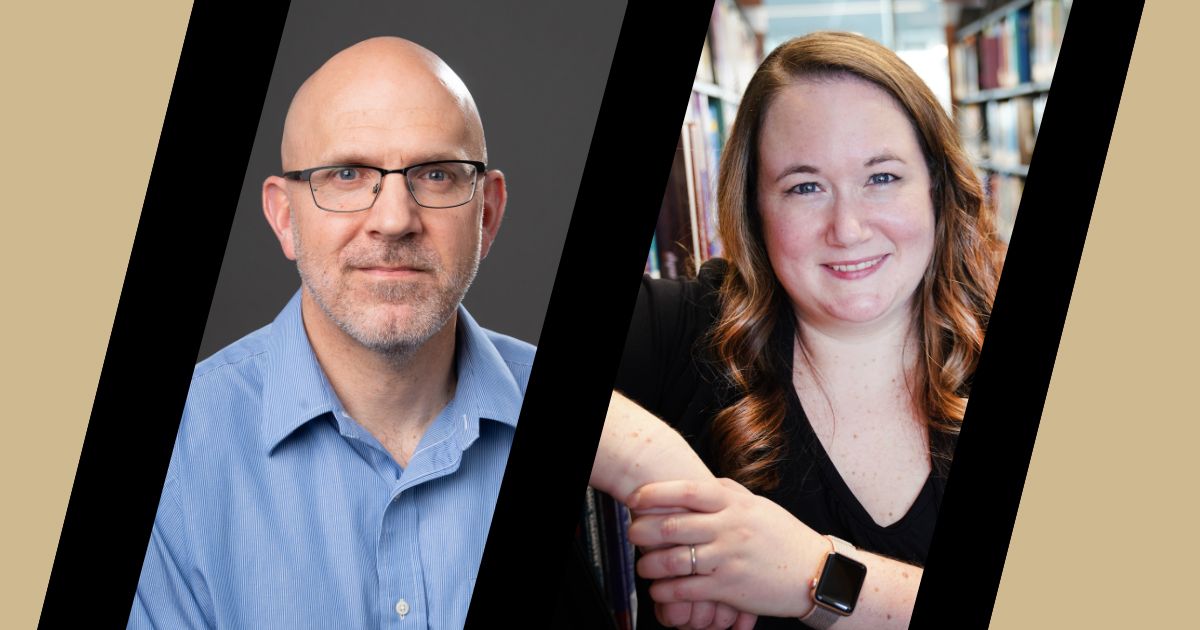Urban Forestry, FNR 444 and 445

From walkabouts on campus and through the West Lafayette and Lafayette communities to take in local trees, to hands-on work utilizing industry standard tools and technology, including GIS, students in Lindsey Purcell’s urban forestry classes acquire experience necessary to prepare them to identify, analyze and evaluate the issues and challenges of growing and maintaining a healthy, safer urban forest.
Urban forestry can be defined as the maintenance, science and technology of managing trees, forests and natural systems in and around the built environment for the health and well-being of all people, Purcell explains in his syllabus.
Trees and greenspaces are under increasing pressure from environmental changes and need ongoing, consistent management to remain healthy and productive. Healthy urban forests contribute to a healthy community and provide high value benefits including economic, environmental, and social services. Research and practice must strive to find balance with the issues surrounding the management and benefits for effective solutions to urban forestry issues, he continues.
With that in mind, Purcell aims to help the students understand the management of trees in the built environment with direct application and engagement from industry professionals. Students learn directly from stakeholders and participate in service learning projects with the City of Lafayette. Each course provides a problem-solving project provided by the city.
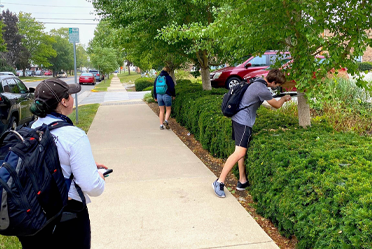
“The evolution of this course has been increased engagement with industry stakeholders such as Duke Energy, the City of Indianapolis, the City of Lafayette, the Indiana DNR, and Indianapolis Power and Light,” Purcell said. “Also, through grants and departmental assistance, we have been able to purchase essential equipment which provides experiential learning opportunities.”
The laboratory experience provides opportunities to directly utilize specific tools and techniques used in managing trees in the urban forest. This semester webinars and zoom calls from guest speakers have given professional perspectives from those in the field.
“My favorite part of the class is talking to industry professionals – arborists, lawyers, extension specialists – and having the wide variety of expertise right there as a resource,” said Josie Beach, a junior natural resources and environmental sciences major and urban forestry minor. “I also like how Lindsey challenges students on what we read for class and outside classroom stuff. He makes the class interesting by leaving it as a discussion. He never tells us what to think, but facilitates us as the students figuring things out. It is a lot more meaningful that way. Obviously, some things are not up for debate against an experienced urban forester, but concepts are never just handed to us. We have to think and talk and understand. That and having “the real deal” as the professor are what I think sets this class apart.”
Purcell came to the department of Forestry and Natural Resources in 2008 and brought a wealth of experience, including eight years with the city of Indianapolis as forestry supervisor and city forester. The registered consulting arborist, board-certified master arborist and tree risk assessment qualified instructor also spent time as director of operations for The Nature Conservancy of Indiana as well as working several years for tree care and landscape maintenance firms, and as an adjunct instructor of horticulture technology at Vincennes University.
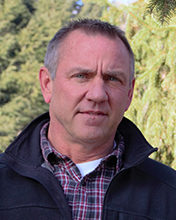
Purcell’s background as an urban forester is key in his teaching style, credibility to students and his ability to help students into similar careers.
“I believe his (Purcell’s) background in urban forestry enhances the class,” said Tate Allen, a senior studying forestry with a concentration in urban forestry. “He can teach us based on his experiences. This then makes topics in the class more realistic with real world situations we would come across in our professional careers. Outside of class Lindsey has a great reputation across the country with people in the industry. Having Lindsey as a connection with other professionals makes him a great resource for helping us become successful in our careers as arborists or urban foresters.”
Class assignments prompt students to interact with individuals in the urban forestry industry as well. Sashay with a Professional (SWAP) sees students interview the professional of their choice - be that a city forester, nursery grower, landscape architecture firm, or other individual involved with trees in the built environment. Students must shadow that person, visit the individual in the field, and put together a class presentation about the experience, which also provides additional opportunities for students to enhance their public speaking skills.
A photography assignment charges the students to locate trees in their neighborhood and identify any issues and suggest possible causes for them. An urban tree assignment has class members team up with the city forester on a designated project, including attending planning meetings and creating necessary documents to fulfill the needs of the client and the project.
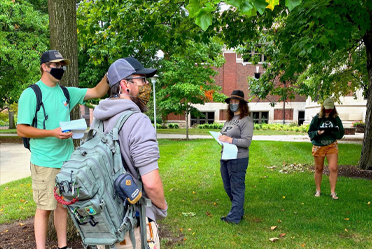
“My favorite part about the class is being able to listen to different guest speakers; it really helps me connect what we are learning in class with real life applications and careers,” Allen said. “The things we learn and do in lab are specifically oriented around the urban forestry and arboriculture fields I am interested in pursuing upon graduation. With the basic knowledge of determining different risk factors of a tree or being able to calculate a tree’s value makes me feel like I have a little bit of a better start than others going into the industry.”
When students complete the class, it is hoped that they can identify common issues, challenges and pressures which threaten the urban forest, and also apply the unique principles of urban forest management to real world cases to aid in sustainability.
“My favorite part of the class is that we learn very practical knowledge,” senior forestry major Esther Mussman said. “The best part of learning is seeing how my new knowledge applies to the world around me. I get to see ordinary things in a whole new light because I understand something new about them. Lindsey's class taps into this. I will never look at an urban tree in the same way again!”
